EY refers to the global organization, and may refer to one or more, of the member firms of Ernst & Young Global Limited, each of which is a separate legal entity. Ernst & Young Global Limited, a UK company limited by guarantee, does not provide services to clients.

Financial institutions and FinTechs alike are embracing digital currencies and other digital assets to drive innovation and competitive advantage.
In brief
- Digital assets, including cryptocurrencies, tokenized assets, and Central Bank Digital Currency (CBDC), present significant opportunities for financial institutions in the Middle East and Africa (MEA).
- Banks and financial institutions need to undertake targeted education programs, create functional expertise, and explore setting up digital assets labs for efficient integration and utilization of digital assets.
- Navigating the realm of financial systems, it becomes unfeasible to overlook the rising prominence of digital assets in contemporary economic structures.
Comprising seven varied types of financial instruments, these digital assets are revolutionizing traditional finance through their creation and settlement via distributed ledger technologies (DLT) like blockchain. The essence of DLT lies in its intricate cryptographic computations, assuring instantaneous, irreversible transactions, and consequently eliminating settlement risks that linger in conventional financial practices.
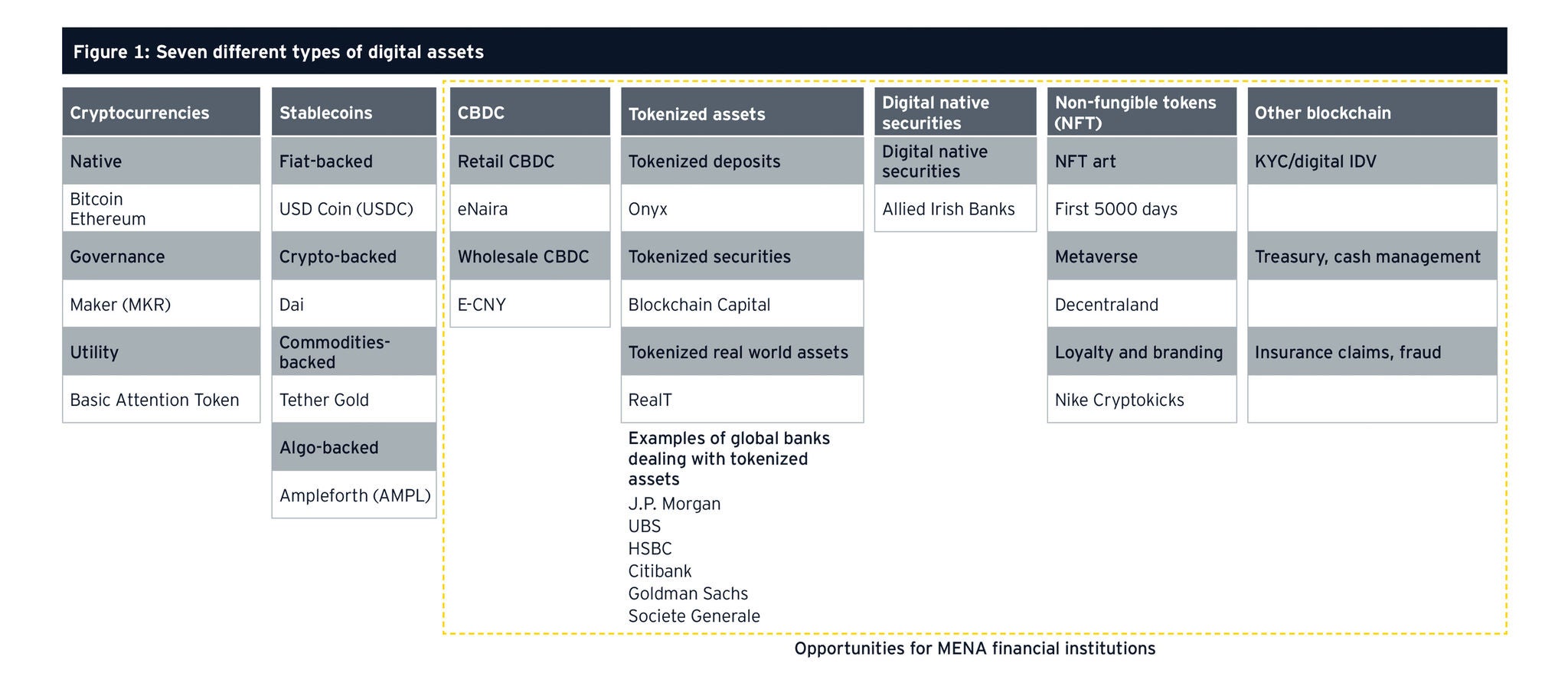
Cryptocurrencies such as Bitcoin and Ethereum are the most commonly known type of digital assets, associated with a high degree of volatility and several well-publicized controversies (e.g., as in the case of the FTX and Binance exchanges). More recently, they have undergone a renaissance of sorts, with the US Securities and Exchange Commission (SEC) authorizing the issuance of exchange traded funds (ETF) linked to cryptocurrencies. In MENA, regulatory attitudes toward cryptocurrencies vary, but individual trading in these volatile assets remain widespread, enabled by platforms such as Coinbase and Binance.
Global financial institutions have focused on two other types of digital assets — digitally native securities and tokenized assets, which includes tokenized bank deposits, as well as physical assets such as real estate or commodities. The Dubai Virtual Assets Regulatory Authority (VARA) has a well-defined framework for regulating such digital assets, and several international firms are exploring issuing bonds backed by tokenized assets under these regulations. Banks across MENA are also exploring Shariah-compliant Islamic finance versions of tokenized assets and securities.
Non-fungible tokens (NFT) are another class of digital assets relevant for ultra-high net worth (UHNW) clients at MENA banks and asset managers, but with potentially lucrative mass-market applications, such as unifying disparate loyalty programs for consumers.
EY research suggests that digital assets represent a US$1.3t market globally, with even the relatively small, tokenized assets forays from global banks so far driving US$3b in value. According to the World Economic Forum, tokenization can add US$230b annually to the MENA GDP.

Stablecoins and Central Bank Digital Currency (CBDC) represent another US$240b market globally. Many regulators across the Middle East and Africa (MEA) are focused on CBDC, with active pilots in the UAE, Qatar, KSA, Israel, Egypt, Ghana and South Africa, and a live development in Nigeria called eNaira. Across MENA, regulators are exploring CBDC as a means to drive innovation in payments, reduce the high cost of payments for merchants (interchange costs in MENA remain one of the highest in the world), make cross-border payments more affordable, and increase the transparency and traceability of payments. Beyond the more affluent GCC, other MENA regulators are also keen to improve financial inclusion, e.g., with offline CBDC payments in rural areas with patchy mobile connectivity, as well as increase accountability and traceability of social welfare payments. Central banks also have an incentive to reduce risks from the emergence of new forms of private money; CDBC protects the role of national currency, while also improving the availability and usability of central bank money.
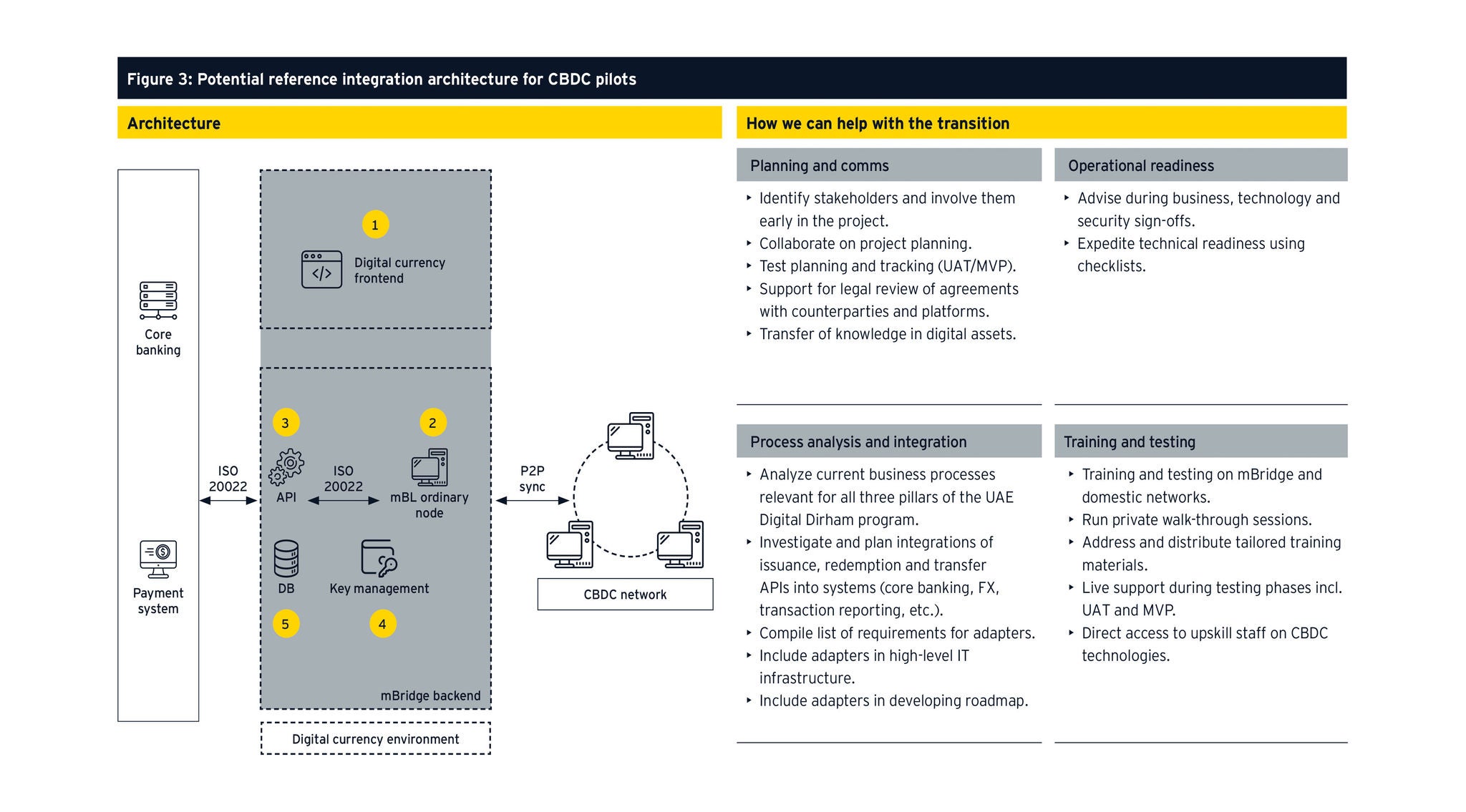
While CBDCs resolve the inherent volatility of cryptocurrencies with a fixed peg to a fiat currency, commercial banks are still unclear on the impact on their deposit base. They are also concerned about increased volatility in times of crisis, for instance, if consumers rush to convert their holdings into the CBDC guaranteed by the central bank. CBDCs are typically also designed to be non-interest bearing, and most commercial banks are still thinking through their business cases for supporting digital currencies.
In contrast, mobile money operators such as MTN in Africa are moving ahead with plans to support CBDC as a natural extension to their mobile money offerings. In particular, it assists new transaction fee-based revenue opportunities by extending mobile money to more remote rural customers and increasing the immediacy of cross-border remittances.
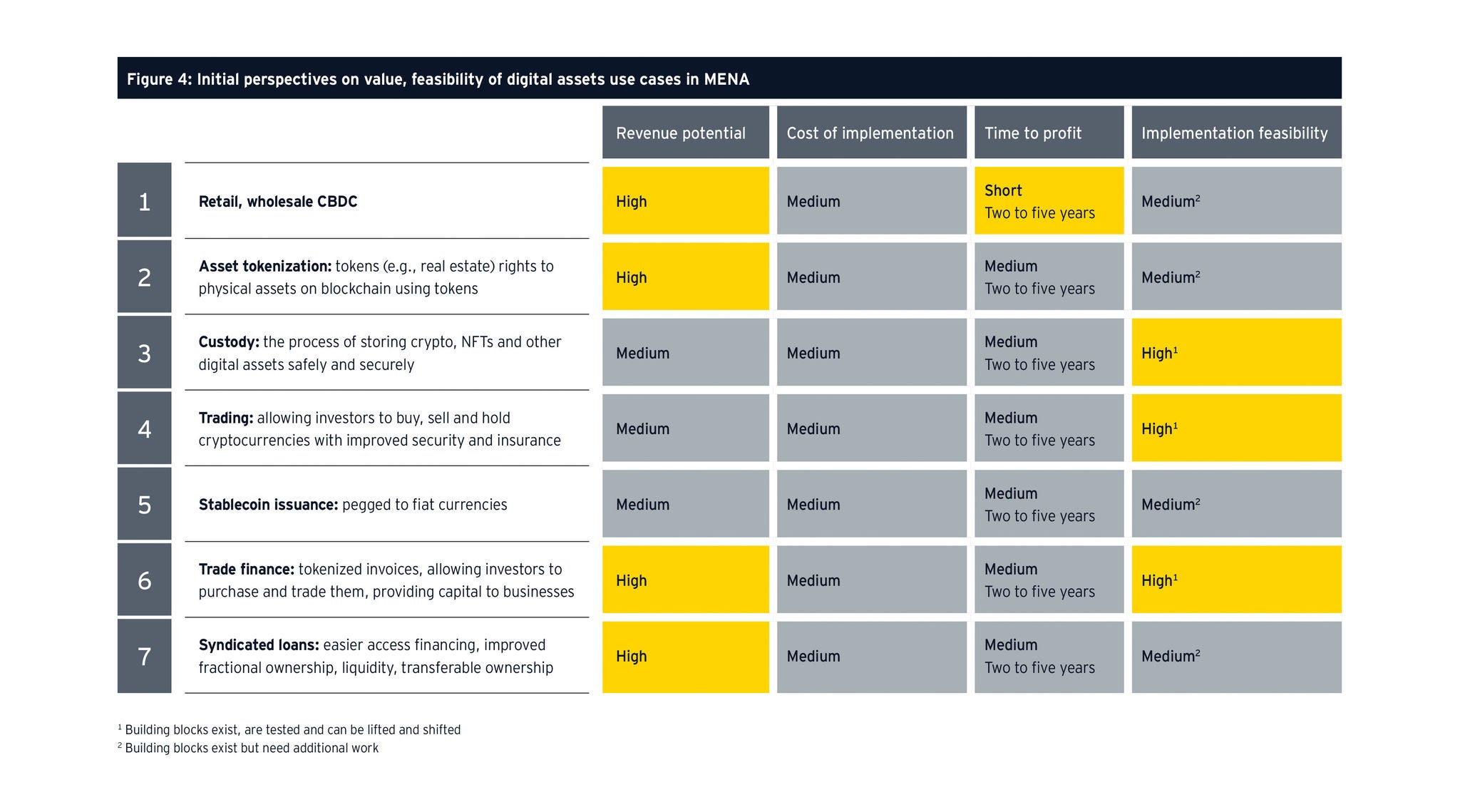
Payment processors have historically provided outsource processing services for traditional card and online payments to banks, as well as FinTech, online marketplaces and mobile money operators. The opportunity now exists to provide similar white-label CBDC processing services, with a packaged CBDC wallet-as-a-service proposition providing highly secure, scalable CBDC wallet infrastructure for both banks and mobile money operators to provision custodial or non-custodial wallets for end-customers. It would enable banks to provision and manage wallets using simple application programming interface (API) and integrate wallets into their own app, to provide a better end-user experience. This packaged proposition could offer a gateway to different types of CBDC wallets, e.g., Single Key, Multi Sig and MPC wallets.
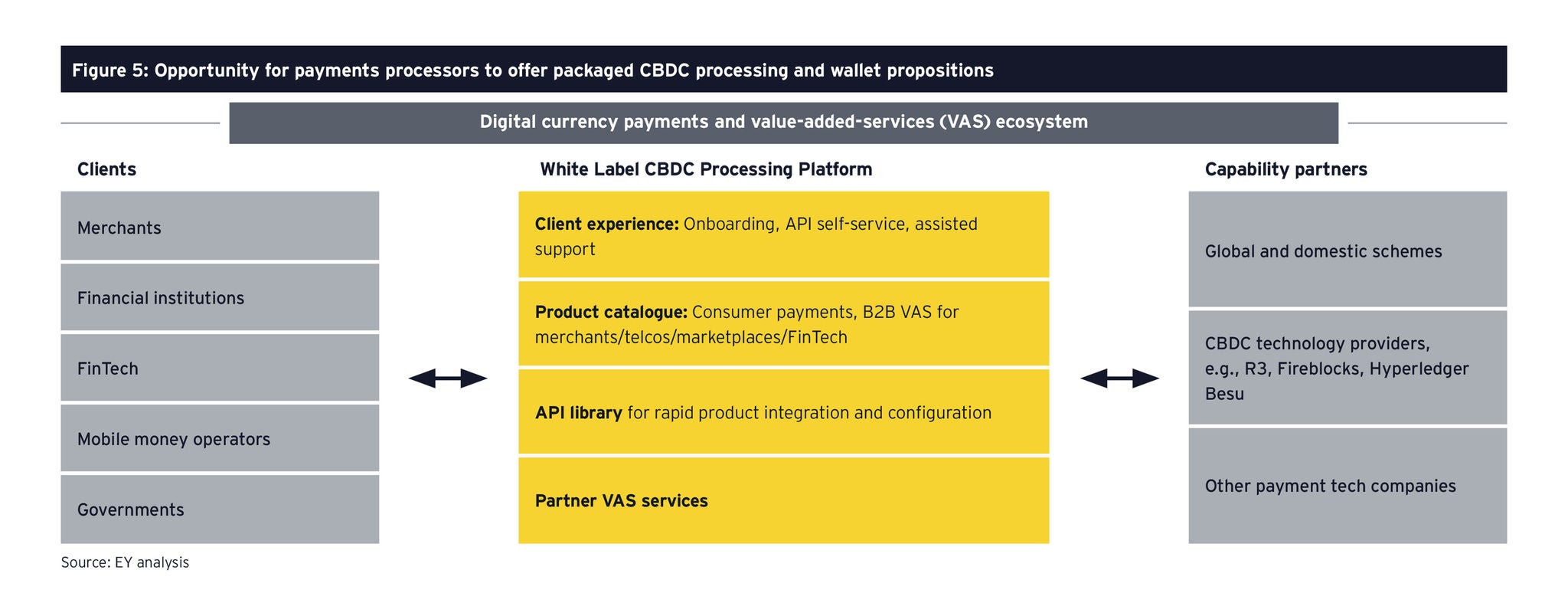
At the global EY organization, we have developed an initial perspective on the potential value and feasibility of several digital assets use cases beyond CBDC, for financial institutions across MENA, based on discussions with several banks and payment processors across the region, and drawing upon the experiences elsewhere, e.g., with the Regulated Liability Network (RLN) in the UK.
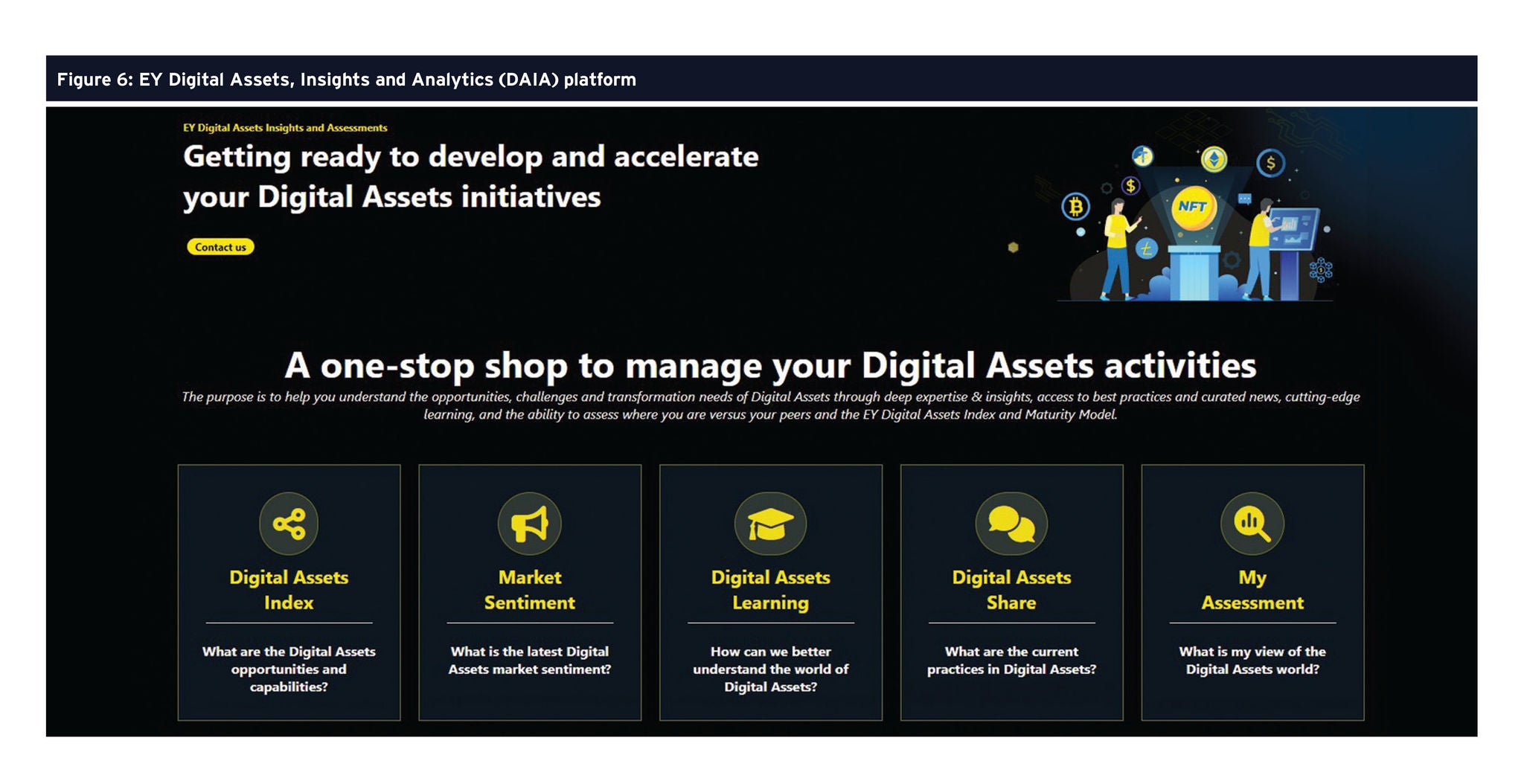
To start exploring the opportunity from these use cases, it is essential for MENA financial institutions to identify a common understanding of CBDC and digital assets across their stakeholders with targeted education and alignment programs. The global EY organization can assist with the EY Digital Assets, Insights and Analytics (DAIA) platform which is currently being used by 15 of the largest financial institutions across the world to track the development of digital assets across markets, to define and explore new use cases, to assess risks across the value chain, and to adapt their financial models and risk appetite frameworks appropriately.
The next priority should be to address functional knowledge within each financial institution on different aspects of digital assets across product management, finance, risk, operations and technology functions. Most financial institutions underestimate the potential impact of CBDC and digital assets on their technology landscape. EY research finds that enhancements to several existing core platforms are likely to be required (e.g., to advice CBDC as an additional financial instrument in bank ledgers), in addition to several new systems that would need to be integrated, for instance, CBDC key management solutions.
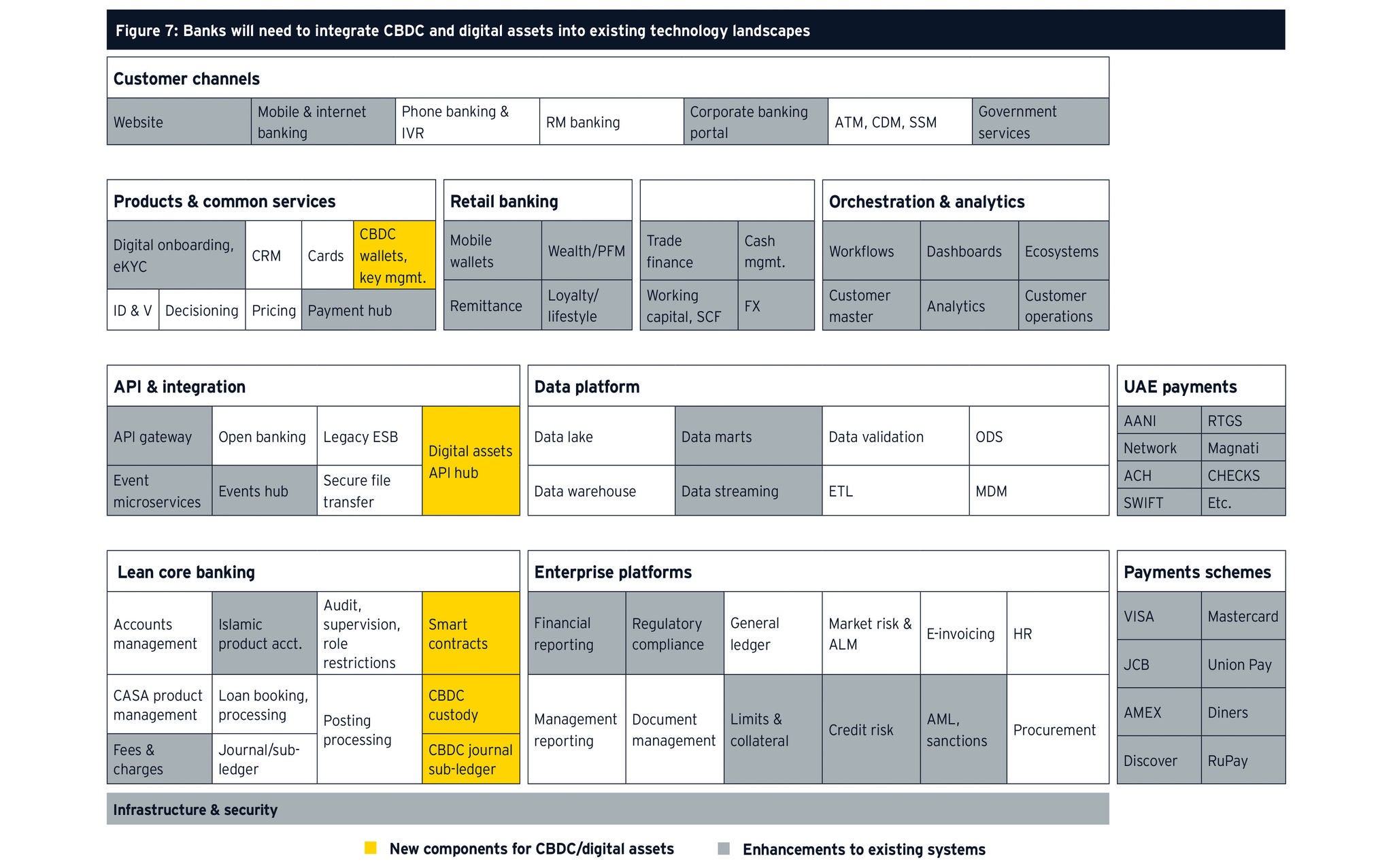
Banks are exploring setting up digital assets labs as a locus for broadening and deepening such functional experience, while also setting up clear governance for digital assets product roadmaps and commercialization.
Finally, a digital assets lab would also provide the initial technology assets and sandboxes required for bank stakeholders to tangibly explore CBDC and digital assets use cases, e.g., using the EY tokenization platform, and the Starlight platform for managing privacy and security issues. The EY global organization has been at the forefront of digital assets industry collaboration, for example, with the CBDC Tracker initiative, as well as through collaborations with technology providers, through which we can enable clients to rapidly set up and operationalize digital assets lab infrastructures.
Steps for banks to harness digital assets
Digital assets represent one of the most far-reaching opportunities for innovation in financial services, with the potential to upend established regulatory and commercial models. Identified financial institutions, in particular, need to take action to assess both the commercial opportunities from digital assets and CBDC, and to assess the threat posed by a potentially disruptive change. Banks should embark on this journey with five key steps:
- Define your digital assets operating model: Options to build digital asset capability, either through an internal dedicated team, or a standalone entity focused on digital asset offerings.
- Identify promising product opportunities: Address and review the digital asset products catalogue based on the alignment with overall Bank objectives.
- Assess the case for investment: Assess market dynamics and assess potential impact (e.g., potential upside, decrease in operational cost).
- Identify gaps in execution capabilities: Examine practical aspects of the approaches and capabilities required to recommend a target state in line with industry due practices.
- Bring executives, staff and clients along on the journey: Align stakeholders and assess demand from clients. Actively drive client understanding of products, services and approaches.
The immediate starting point should be targeted education and alignment sessions with both senior executives and functional leaders within the Bank, as well as with key clients, to establish a common understanding of digital assets and their implications for different areas.
How EY can help
The global EY organization assists in designing and providing leading class learning programs for executives and functional leaders at financial institutions. As EY organization has developed a bespoke approach, provided through engaging face-to-face learning events, with optional activation sessions designed to drive the right outcomes for your senior and board level executives. We can outline specific technical learning in line with the agreed topics to develop the pathway further. This includes:
- Case studies and challenges: Leaders will be asked to work with real life problem situations to drive the objectives of each of the workshops and to make the learning impactful and personally relevant.
- Continuous learning: Leaders can engage with other training collateral and resources, identify a small forum to connect with each other through a learning hub, test ideas and collaborate.
- Access to EY subject matter resources: Leaders will have access to the most up-to-date and thought-provoking insights through the group of regional and global subject matter resources (SMRs) in each area.
This level of alignment and education is critical, given the potential for a significant transformation of a bank’s strategy, risk and operations. The global EY organization offers multidisciplinary capabilities and services to support you through the different stages of this journey. These include distinctive capabilities in digital assets strategy, change management, regulation, legal matters, risk management, control and technology.
Related articles
Harnessing technology for purpose-led growth
MENA companies should embrace new technologies to reimagine a less risk-prone and more agile future to help keep pace with customer demands.
Summary
There are various opportunities that digital assets present for financial institutions in the MEA. To effectively utilize digital assets, banks should undertake educational programs, set up digital assets labs, and build their capacity in product management, finance, risk, operations, and technology. EY can assist institutions with platforms to track digital asset developments and help design world-class learning programs.



